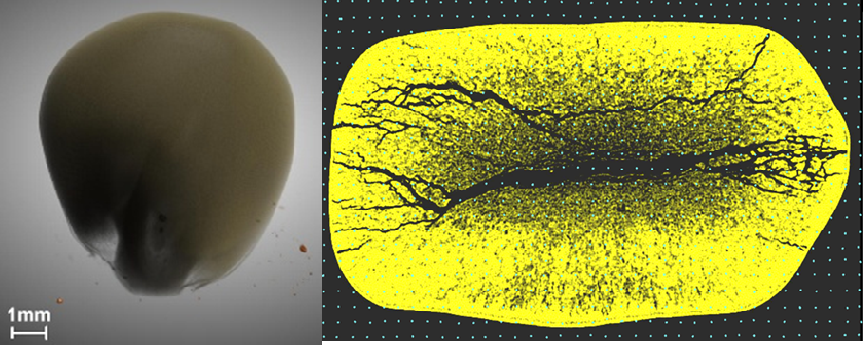The implementation of the project has resulted in a new scientific contribution to the methodology for
studying the influence of the shape and arrangement of holes in perforated sifting surfaces of separation
equipment on their technological efficiency, reliability, and the degree of damage to biological material.
The developed surfaces featuring holes of complex epicycloidal shape and volumetric riffles make it
possible to enhance the productivity and quality of the separation process for loose materials, improve
durability, and reduce the level of particle damage.
To control the dynamics of loose material particles during sifting, mathematical models have been
developed based on hydrodynamic analogy, taking into account the kinematic and design parameters of
the perforated surfaces as well as the properties of loose materials.
The use of numerical and experimental methods enabled the identification of patterns of the natural
oscillation frequency and equivalent stresses of perforated sifting surfaces with holes of complex
geometry and riffles. Optimal parameters of perforated surfaces with such holes and riffles were
established, which prevent resonance phenomena and reduce stress concentrators (Fig. 1).
Analytical calculations and experimental studies made it possible to determine the dependencies of
the adhesion force between loose material particles and different types of hole edges. Additionally,
variations in the properties of loose material and the action of elastic rubber cleaning balls on the holes
were taken into account.
The use of strength experiments, tomography, and statistical data analysis made it possible to identify
patterns of change in microdamage to loose material particles depending on the parameters of external
loading (Fig. 2).
As a result of the research, a methodology for identifying the manufacturing accuracy of perforated
surfaces using various production methods was developed.
Measurement modes for CMM were established to ensure sufficient accuracy and measurement time
for holes of complex geometry.
The results obtained in the project make it possible to enhance the efficiency of using perforated sifting
surfaces in separation equipment by implementing holes of complex geometry and riffles, as well as
through multi-criteria optimization based on the following criteria: separation productivity and quality,
reliability of perforated surfaces, and minimization of particle damage.
The developed methodologies, laboratory stands, and acquired data form the foundation for further
research and justification of the parameters of separation equipment. This will contribute to the
sustainable development of the mechanical engineering discipline and contribute to the creation of
innovative equipment.

Fig. 1. FE-modeling of perforated sifting surfaces

Fig. 2. Tomography of biological objects and determination of microdamage level

Projekt współfinansowany ze środków Unii Europejskiej w ramach Europejskiego Funduszu Społecznego, Program Operacyjny Wiedza Edukacja Rozwój 2014-2020 "PL2022 - Zintegrowany Program Rozwoju Politechniki Lubelskiej" POWR.03.05.00-00-Z036/17